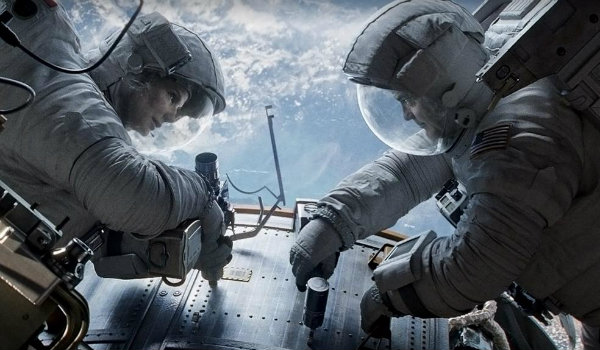Did “Gravity” Save 3D?
Is 3D technology a gimmick presented by the film industry to make more money? Well the answer to that question would depend on who you ask. The glasses wielding technology has definitely cost us at the ticket counter, but in terms of the technology itself, there is not one definitive answer. When “Avatar” took the world by storm in 2009, we saw everyone from sci-fi connoisseurs to grandmothers rushing to the theater to see what all the fuss was about both regarding the film and the 3D it employed. Since then, not much has been said about it. That is until Alfonso Cuaron’s “Gravity,” which has the art house crowd paying that surcharge to see Sandra Bullock float around in three dimensions. Did “Gravity” save 3D technology?
Pandora, the 3D planet
The success of “Gravity” is not due to the movie’s 3D release. In fact, a significant portion of the $400 million + it has made so far worldwide has been from 2D showings. But the buzz surrounding the project has included strong support of the 3D as one of its positive attributes. It’s difficult to remember such a boast from critics and fans. I thought the 3D break-dancing of “Step Up 3D” was cool, but the film community didn’t seem to agree with me.
We may think of 3D movies as a modern development. Actually, the technology has been around for a long time–north of 100 years, in fact. But the constant resurfacing and technological advancements didn’t push it into a prominent position before the 21st century. You’ve probably attempted to forget it, but I call your attention to 1983’s “Jaws 3D.” Yeah, that happened. The early 2000s saw IMAX encompass 3D to add an extra element to their screenings. Then in 2009, we got the flood. 3D was everywhere. From “Jonas Brothers: The 3D Concert Experience” to “Up” to “The Final Destination,” the spike was noticeable.
The face of 3D was released to great fanfare in December of 2009. “Avatar” exceeded all expectations in terms of success as it rocketed to the top of the all-time grossing charts. It even sunk James Cameron’s other box office kingpin, “Titanic,” which seemed impossible to do. (Pun definitely intended, by the way.) But now we get to the asterisk next to that $2,782,275,172 number. If we account for inflation and judge the movies by the number of tickets sold and not the box office receipts, the top of the chart looks very different. According to Box Office Mojo, “Avatar” sits in 14th place and “Titanic” is in fifth place. They don’t even come close to “Gone With the Wind” and its 202 million tickets sold.
So what does all this have to do with 3D? It just shows that 3D is absolutely a way for studios to improve their bottom line when the number of people going to the movies isn’t what it used to be. Plus it also means that James Cameron knows how to appeal to a huge percentage of the movie going population. Some of the credit for “Titanic” should also go to Celine Dion for being so epic with “My Heart Will Go On.” “Avatar” gave a new audience the opportunity to experience 3D and it even came close to winning the Oscar for Best Picture. I have no idea how close, of course, but the oddballs in the Hollywood Foreign Press gave it the Golden Globe for Best Motion Picture Drama, so it had a big part in helping 3D catch on with those crowds.
A 3D Oscar?
Since then, the technology’s success is mostly contingent on the film it is associated with. Box office numbers don’t necessarily show a spike when the picture is presented in 3D. Sometimes it even hurts a movie’s reputation. Do you remember the “Clash of the Titans” debacle? But now in 2013, we are seeing “Gravity” give 3D a strong endorsement.
Directed by Alfonso Cuaron (famous for “Harry Potter and the Prisoner of Azkaban” as well as “Children of Men,”) “Gravity” won the box office in its first three weeks and has brought big hype and strong reviews with it. While the blockbusters of recent years have used 3D both in the form of post-production conversion and being filmed that way, we now have the rare example of a filmmaker justifying the technology by giving depth to the images and plunging the audience into an immersive setting. In this instance, that is space.
Could “Gravity” be the first 3D movie to win Best Picture at the Oscars? It has a legitimate shot. But it’s only November, so the landscape may change as the other contenders hit theaters. The next question is this: will 3D ever catch on with television? I’m waiting for “Downton Abbey” in 3D. Whether we like it or not, history shows us that 3D doesn’t need saving, but hits like “Gravity” definitely help its reputation.


